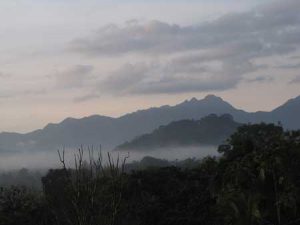Awards give students unique summer research opportunities
By Cynthia Lee
When Dean of Arts Christopher Manfredi established the Arts Undergraduate Research Awards (ARIA) in 2010, his goal was to enhance the undergraduate experience for his Faculty’s students. Now in its third year, and having funded some 85 opportunities for undergrads to work closely with professors, it is safe to say that ARIA has achieved that goal.
ARIA pairs undergraduate students with their professors for the summer to conduct research in their respective fields. Recipients are awarded $4,000, with the Faculty and the respective professor footing equal parts of the bill.
The response from both sides has been very positive. What’s not to love about a program in which everyone involved comes out ahead? “ARIA provides the opportunity for undergrads to gain important skills for research. For the professors, it is another way to mentor students and gain the contribution of a keen undergrad throughout the summer,” said Mat Lyle, Internship Coordinator Faculty of Arts Internship Office.
Through ARIA students get a first-hand look at the research process, including what goes into writing grant and research proposals, and the brass tacks of working with archives and libraries and getting information from across the world. “ARIA’s importance stems from the connection it makes between the Faculty’s commitment to excellence in undergraduate education and support for leading-edge research in the humanities and social sciences,” said Manfredi. It connects world-class researchers with world-class students to provide opportunities to make research an integral part of the undergraduate education experience.”
The following are brief descriptions of four of the 37 ARIA-funded projects of 2011.
The second annual Faculty of Arts Undergraduate Research Event is taking place on Wednesday, Feb. 1, in Leacock 232 beginning at 4 p.m. This event will feature multimedia presentations from students and a research poster showcase. Participating students include those involved in independent and supervised research, as well as the 2011 ARIA recipients. For more information, visit www.mcgill.ca/arts-undergraduate-research/event

Prof. Darin Barney, Art History and Communication Studies
John Watson, English
Project Description: The research internship was conducted for an ongoing project in which Professor Barney is investigating the manner in which changes in grain-handling technology in the Canadian prairies have affected the social political and economic life of prairie farming communities. The project pays special attention to the transition from iconic wooden country grain elevators to centralized high-throughput inland grain terminals, and to the abandonment of the railway branchlines that serviced the old elevators and their communities. The project is particularly concerned with how communities have responded to these technological changes, and includes a detailed examination of one prairie community’s efforts to establish Alberta’s first co-operative, grain-dependent, shortline railroad, the Battle River Railway.
“Of the many experiences that have defined my career as an undergraduate at McGill, being part of ARIA is ranked among the highest,” said Watson. “Although the research I conducted had little relationship to my coursework, it gave me an insight into the methodologies used within the social sciences and humanities. I was able to dive immediately into the vast pools of data and learned quickly how to hone my skills and pull out the relevant information. This is a style of research I was not previously accustomed to, but it has opened my mind to the broad scope of scholarly and professional fields and projects.”

Prof. Will Straw, Art History and Communication Studies
Joseph Henry, Art History and German Studies
Project description: The Pagano Studio, which operated for most of the 20th century, was one of the largest photography studios in the country. Used by fashion magazines (it was one of the first studios to employ African-American models), by advertising agencies, and by the publishers of lurid true crime magazines, it contributed very much to the “look” of American culture in the mid-20th century. Destroyed by fire in the 1970s, the Pagano Studio left few archival records or historical traces. Henry examined newspapers, business directories, the records of photographic associations, fashion and photography magazines and a wide range of sources in piecing together the history of the Studio.
“The ARIA project primarily exposed me to research demands and methods that are almost never required or even suggested in my course work,” said Henry. “I had to consult historic news archives, hobby magazines, fashion catalogues, county clerk records, certificates of occupancy, photography catalogues, regional newspapers, advertising dailies. I learned a lot not only professionally – how to contact research networks, how to better use databases, how to organize materials – but intellectually, I gained an appreciation for cultural objects usually not considered in academic work, and the benefits they provide when piecing together a certain scholarly conception of cultural phenomena.”

Prof. Daviken Studnicki-Gizbert, History
Laurianne St-Onge, Latin American and Caribbean Studies
Project description: Central Panama has been occupied by humans for over 11,000 years. It is also one of the first ‘hearth zones’ of Native agriculture in the Americas. Over the last 500 years it has been claimed and occupied by Spanish colonizers, English and French contrabandiers, Afro-Caribbean gold miners, and a range of indigenous peoples. It is a culturally complex territory and this has been reflected in the changes to the landscape over decades, centuries and millennia.
“Laurianne’s project consisted in mapping out the long-term dynamics of this landscape,” said Studnicki-Gizbert.
“One of her key findings is that human occupation has moved in and out of the area. This opens an important place in our analysis for natural ecosystem processes as historical actors in their own right. Her work also tracks fascinating stories of cultural change and recombination and how these were reflected in landscape dynamics.”
“Spending a summer researching mainly on the pre-Columbian and colonial periods in Panama definitely proved to be more entertaining than I thought it would be,” said St-Onge. “Mixing two different disciplines such as geography and history pushes back the limits of what one can do with a good research subject, the right sources, and creativity. I learned how to use two distinct perspectives at the same time, trying to make the best out of each.”

Prof. Jill Hanley, School of Social Work
Tanya Bindra, International Development Studies and Women’s Studies
Project Description: The ARIA research focused on the processes through which migrant workers are recruited from the Philippines into the Canadian labour market via the placement agency system. Low-skill migrant workers are so often caught in precarious, unsafe and underpaid jobs, regardless of their previous professional experiences or whether they are documented or undocumented.Understanding the role of intermediate organizations such as placement and recruitment agencies is important in understanding the links between economic restructuring policies in the Philippines and the creation and transnational mobilization of large, cheap and exploitable pools of labour across borders.
“By working closely with community groups, social workers, and activist organizations, my research was directly informed by the demands, strategies and struggles of migrant workers and migrants without status,” said Bindra. “I was also able to grasp a broader understanding of migration policy formulation, development approaches and international human rights law, concluding my report with a series of policy recommendations aimed at producing a framework to better address the malpractices of private recruitment agencies. Ultimately, I was able to gain practical insight into understanding the ways academic research can be used to promote social justice and support international solidarity movements.”
